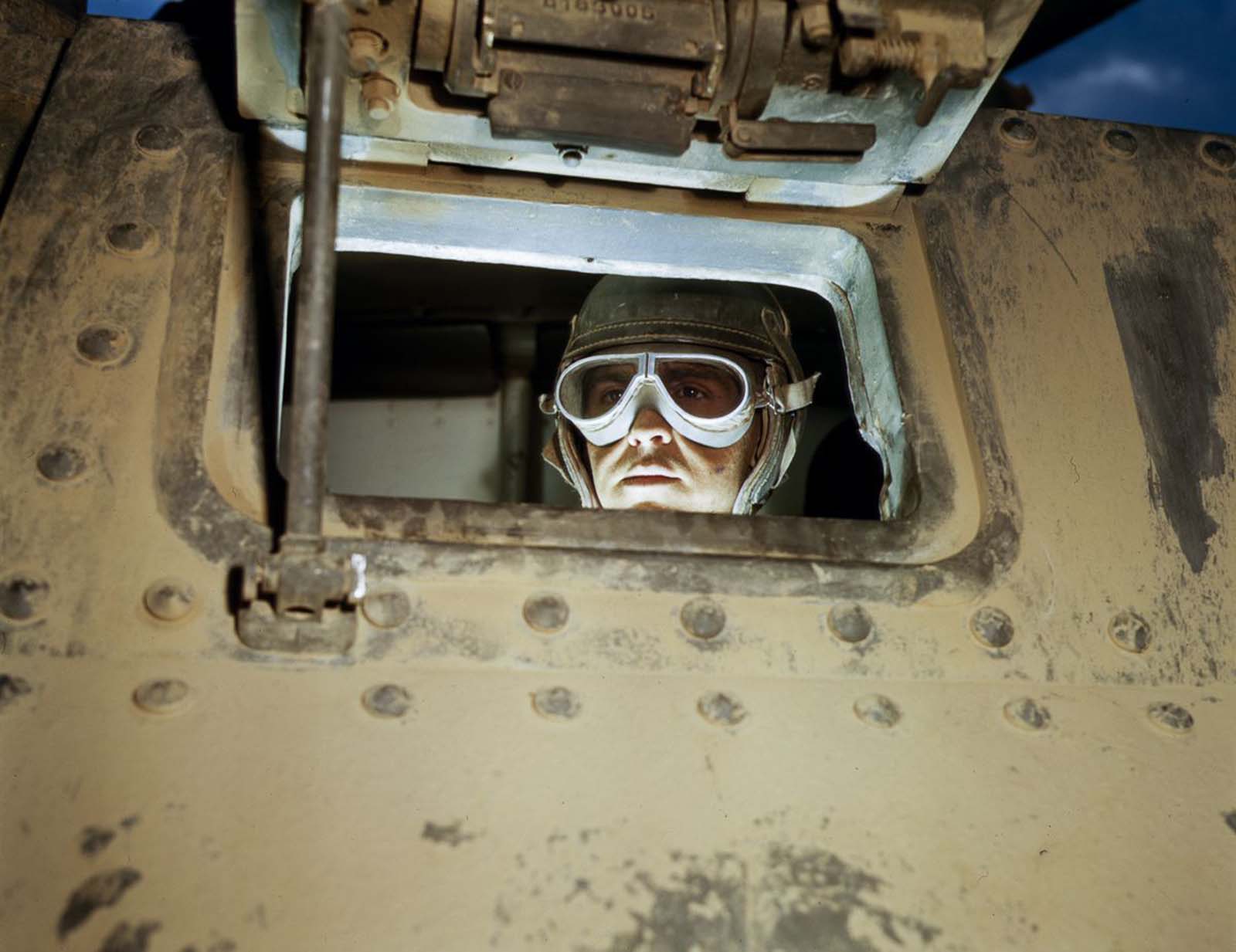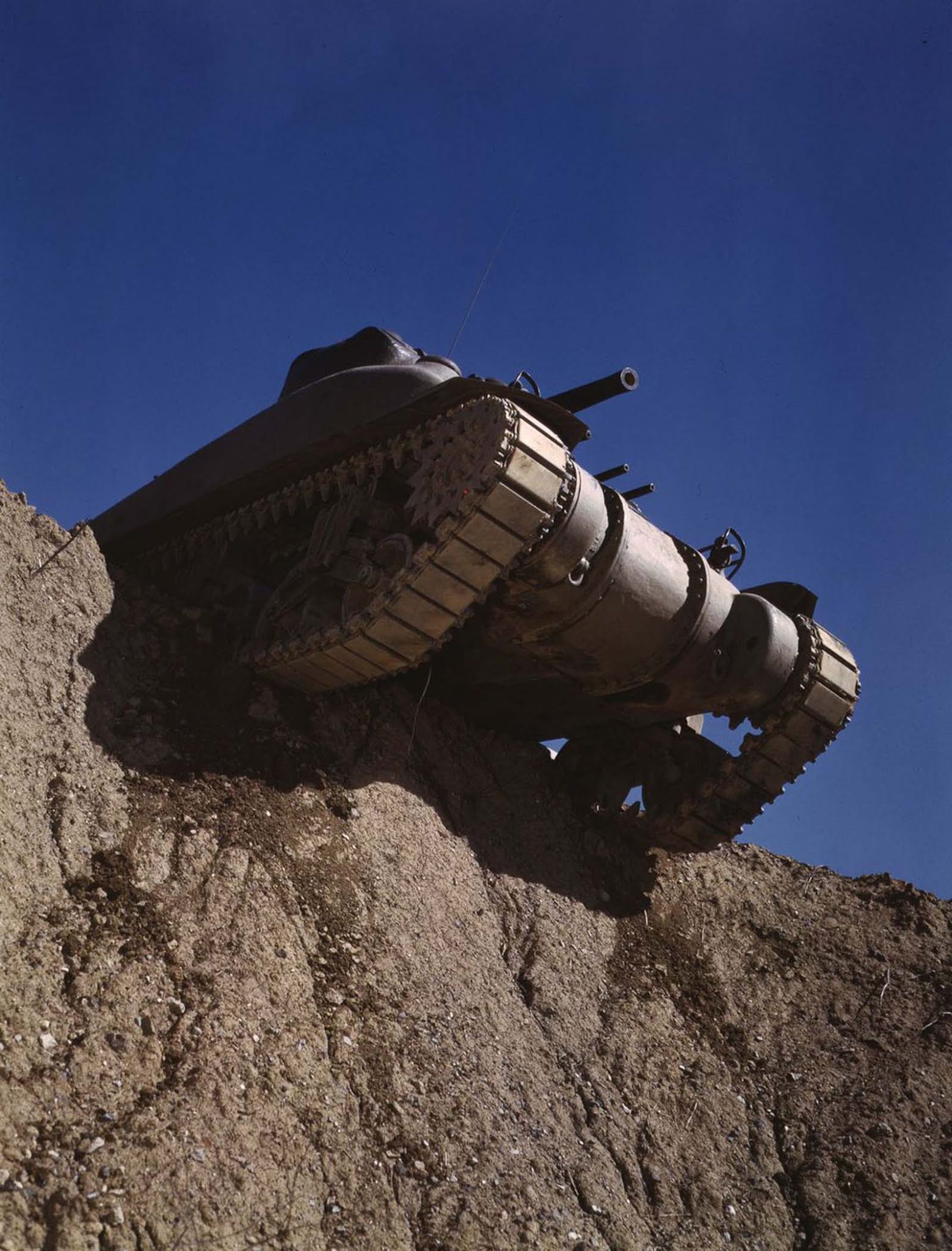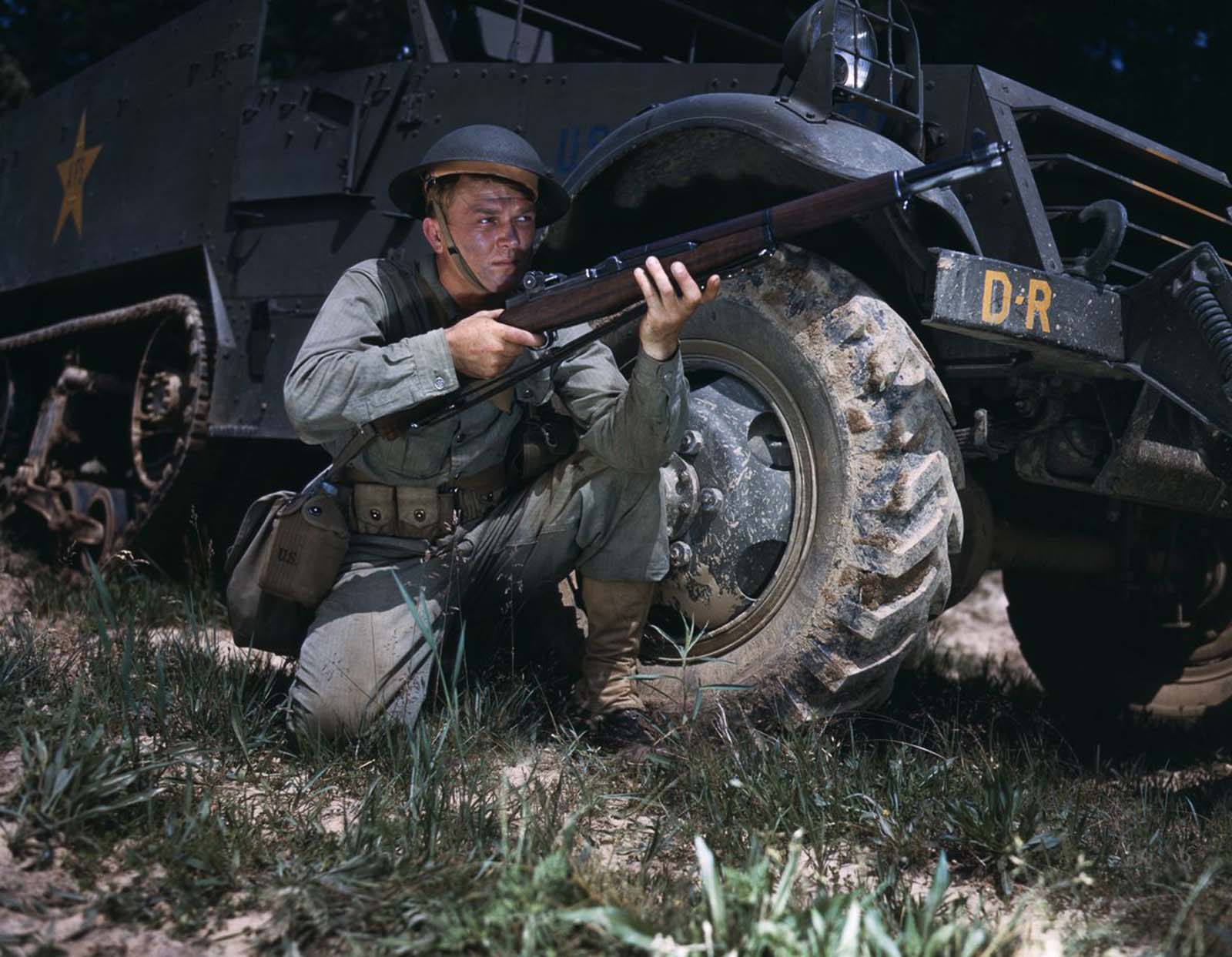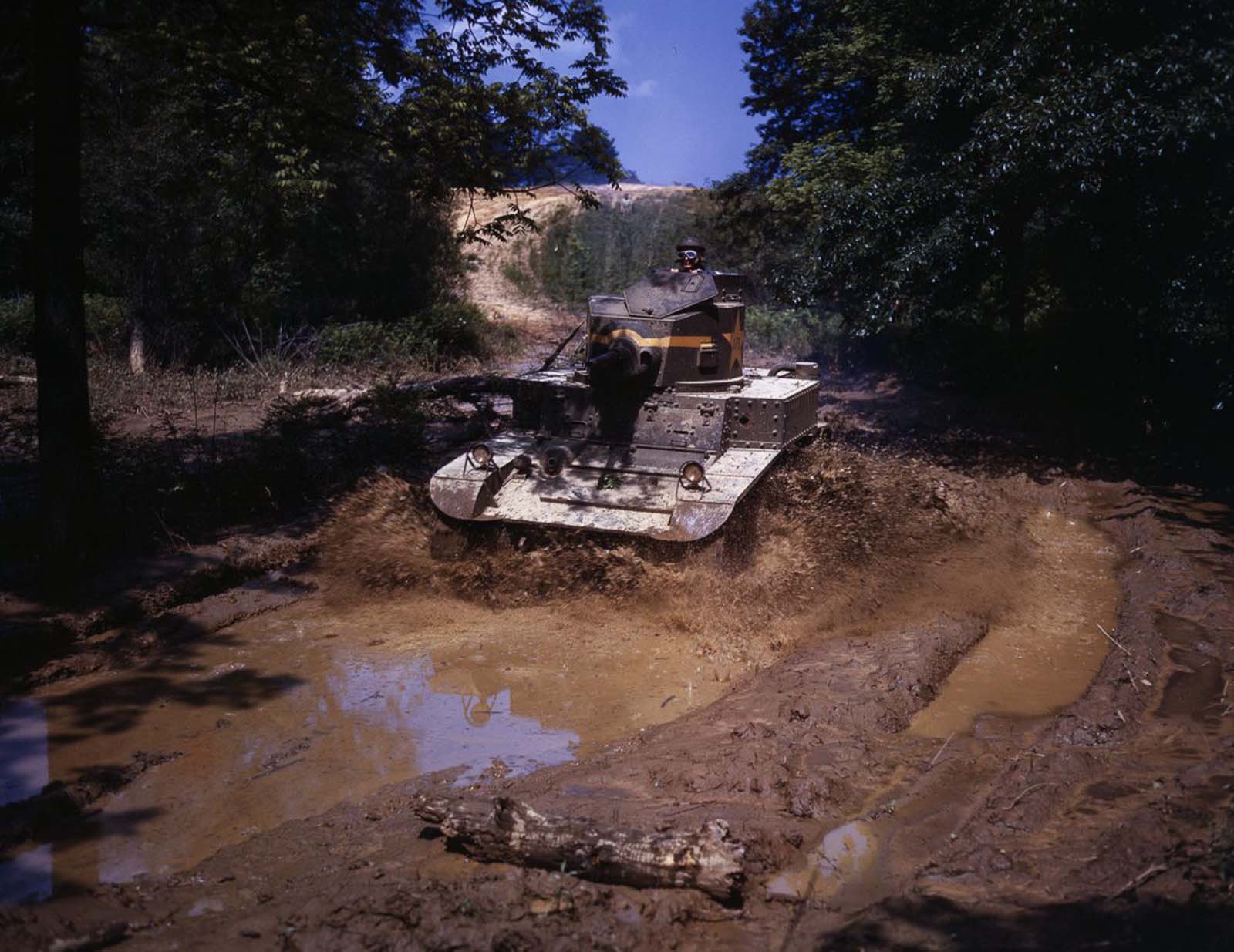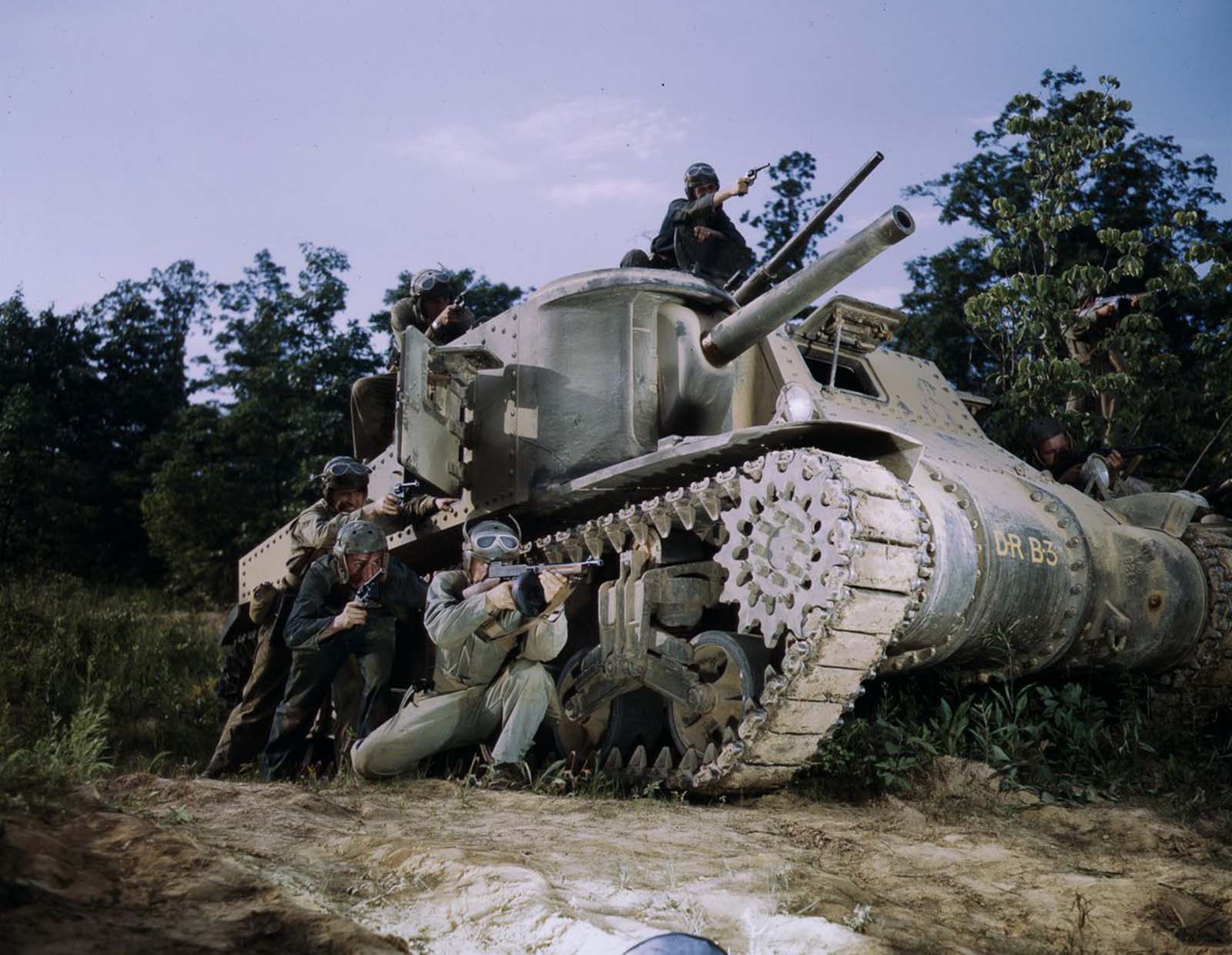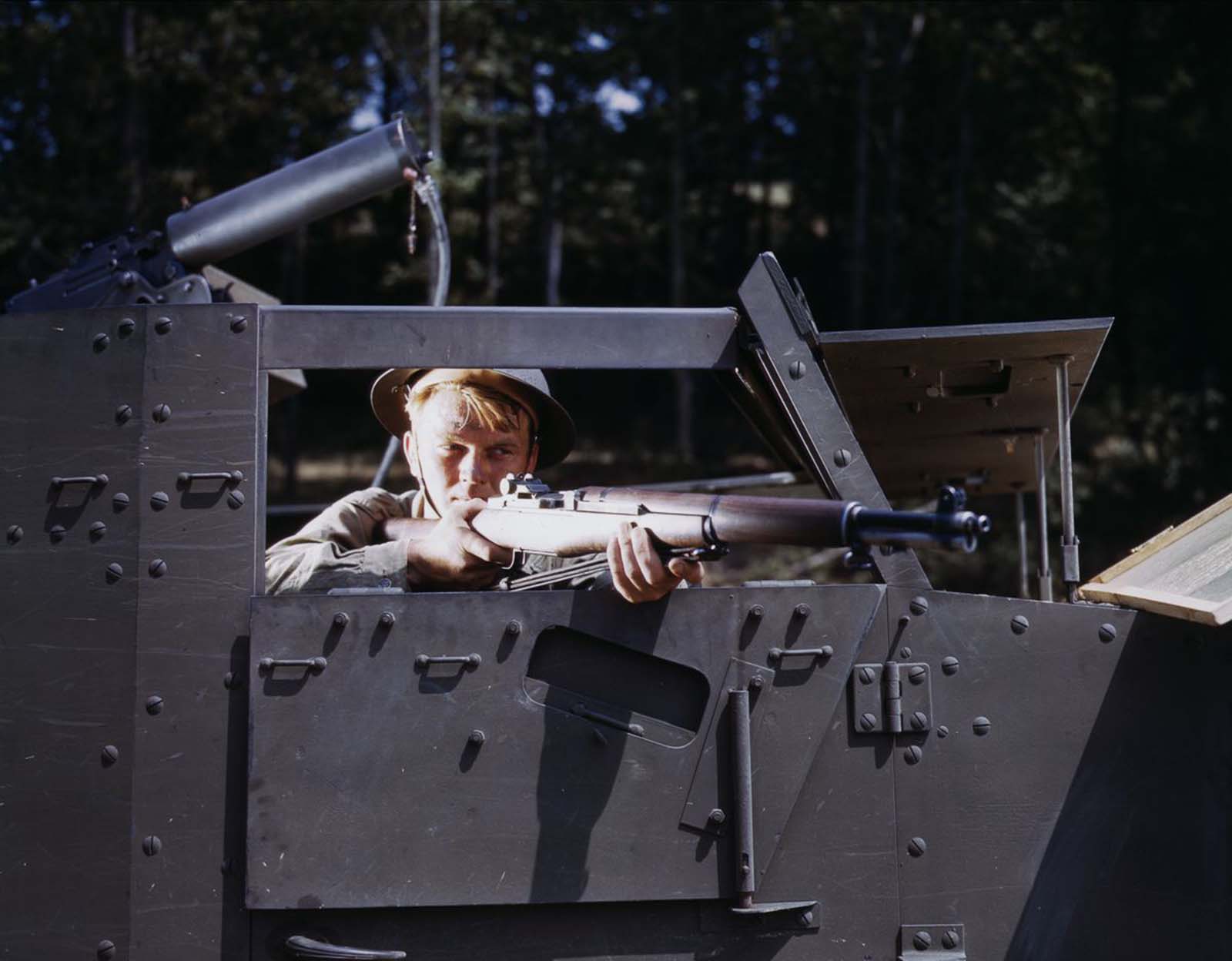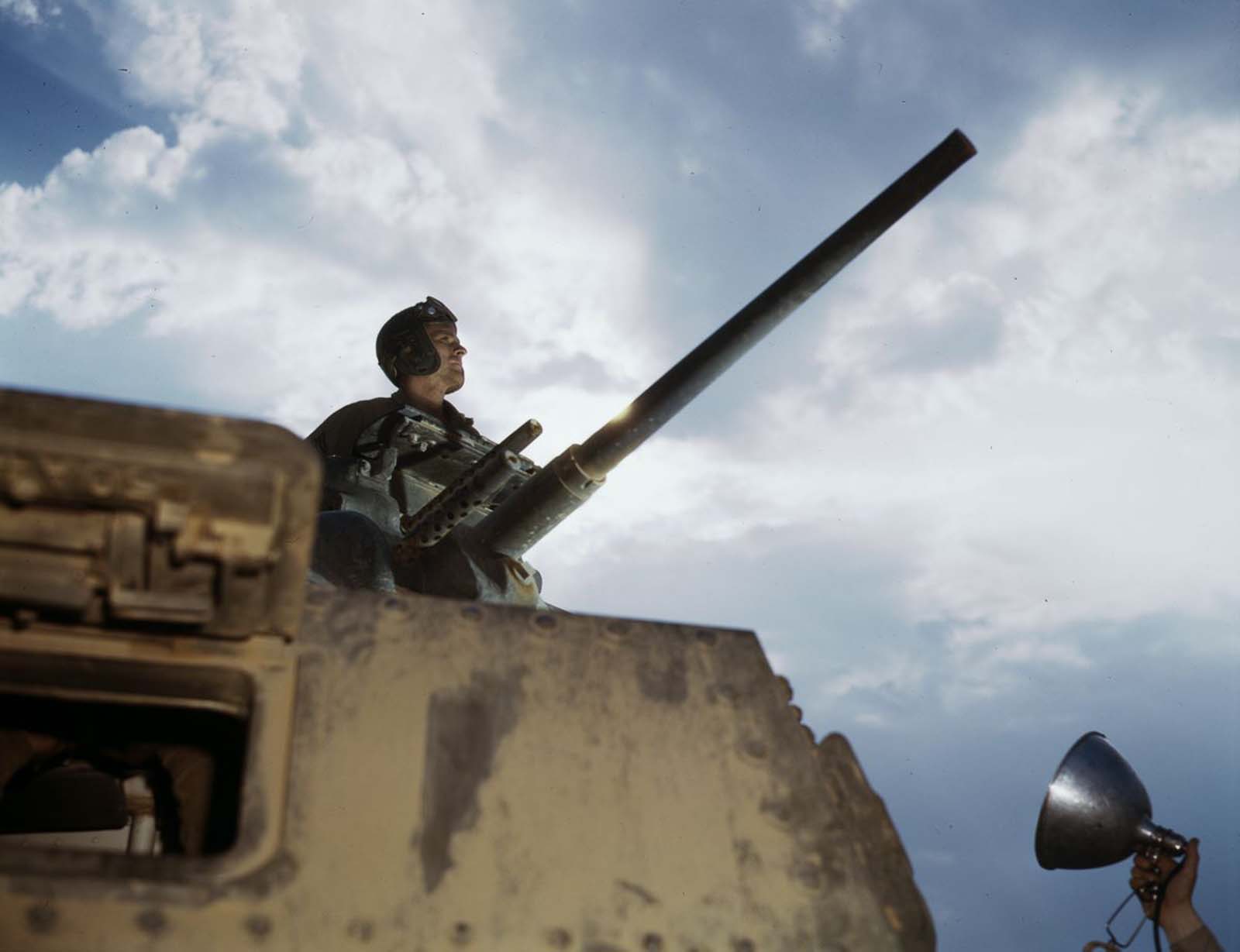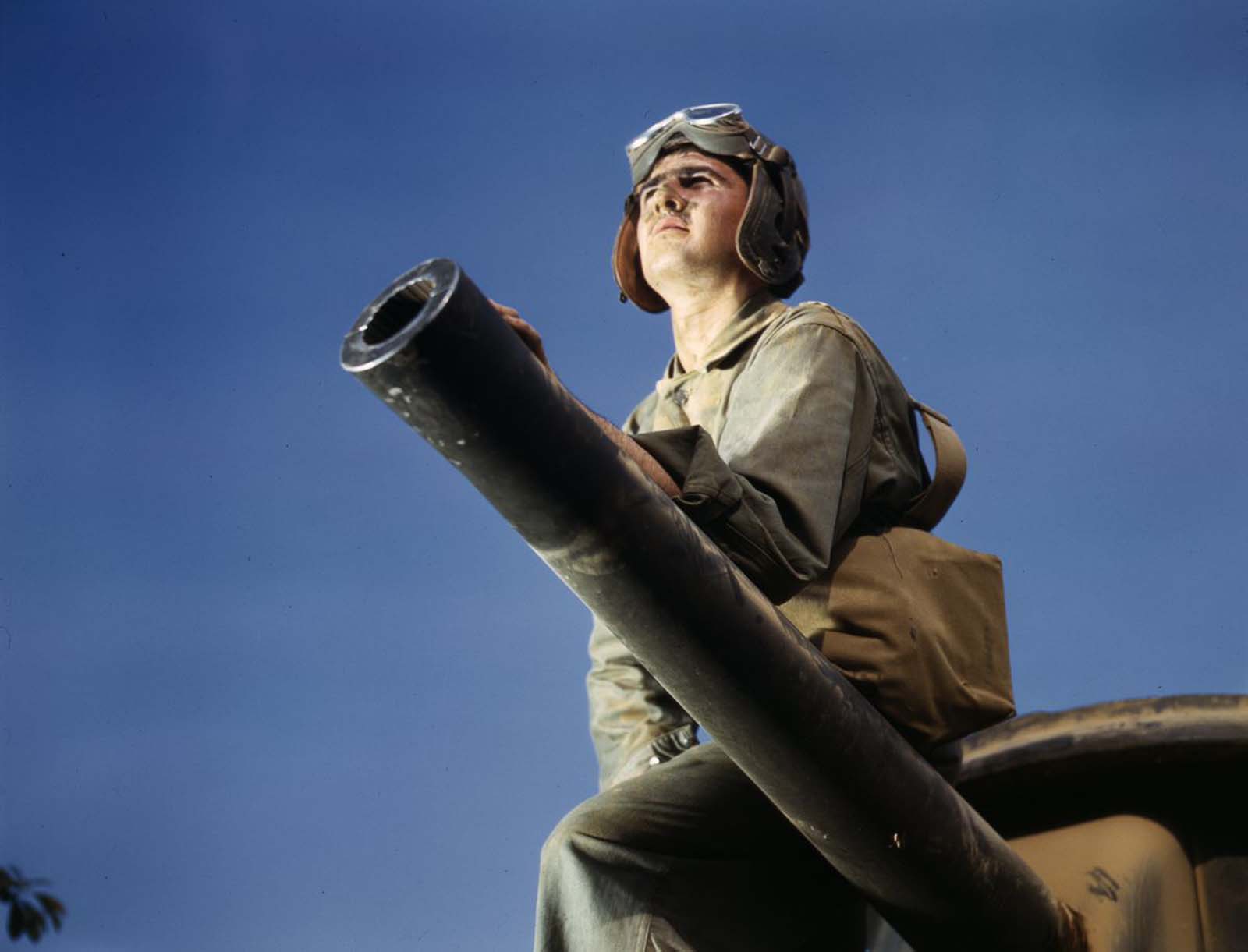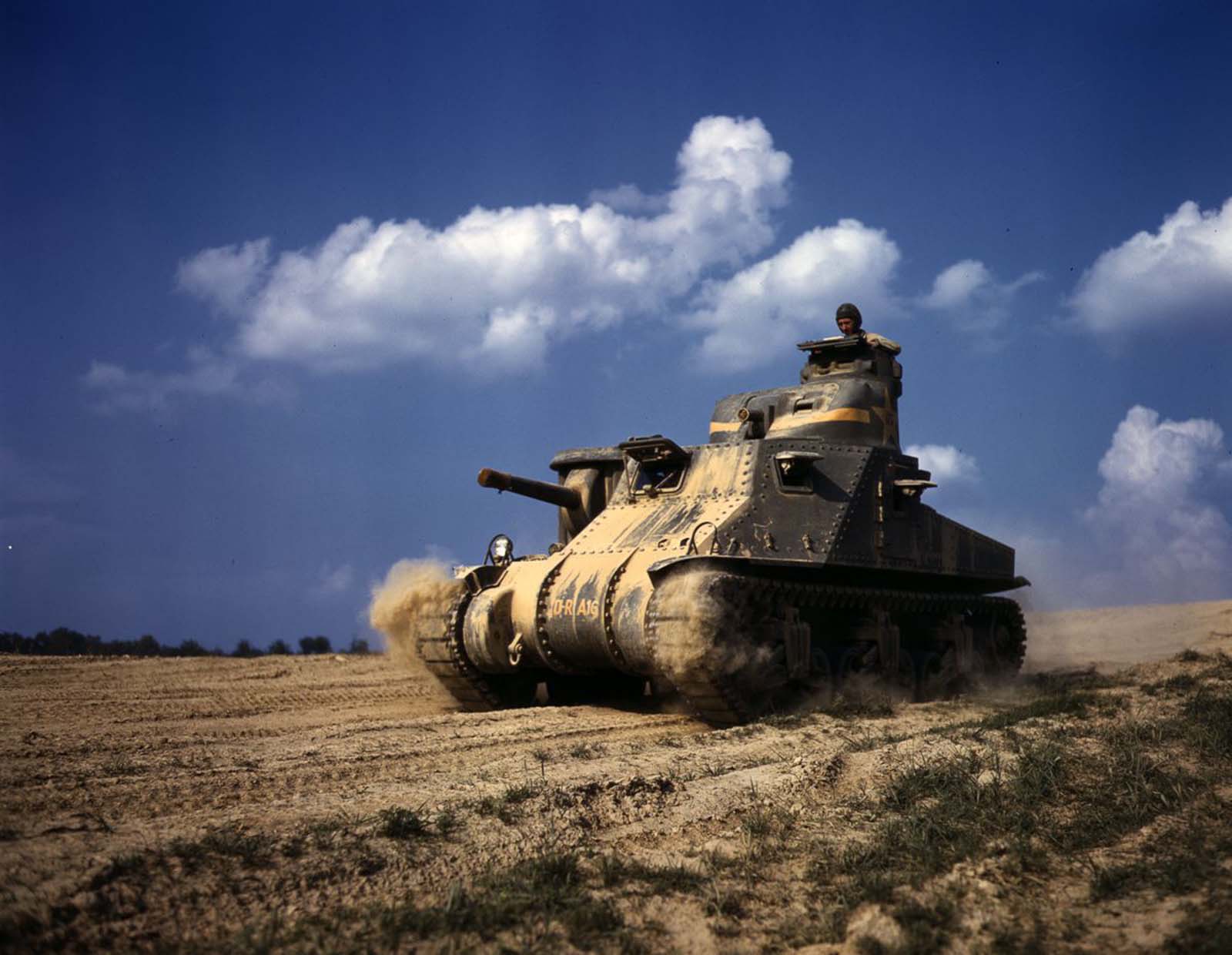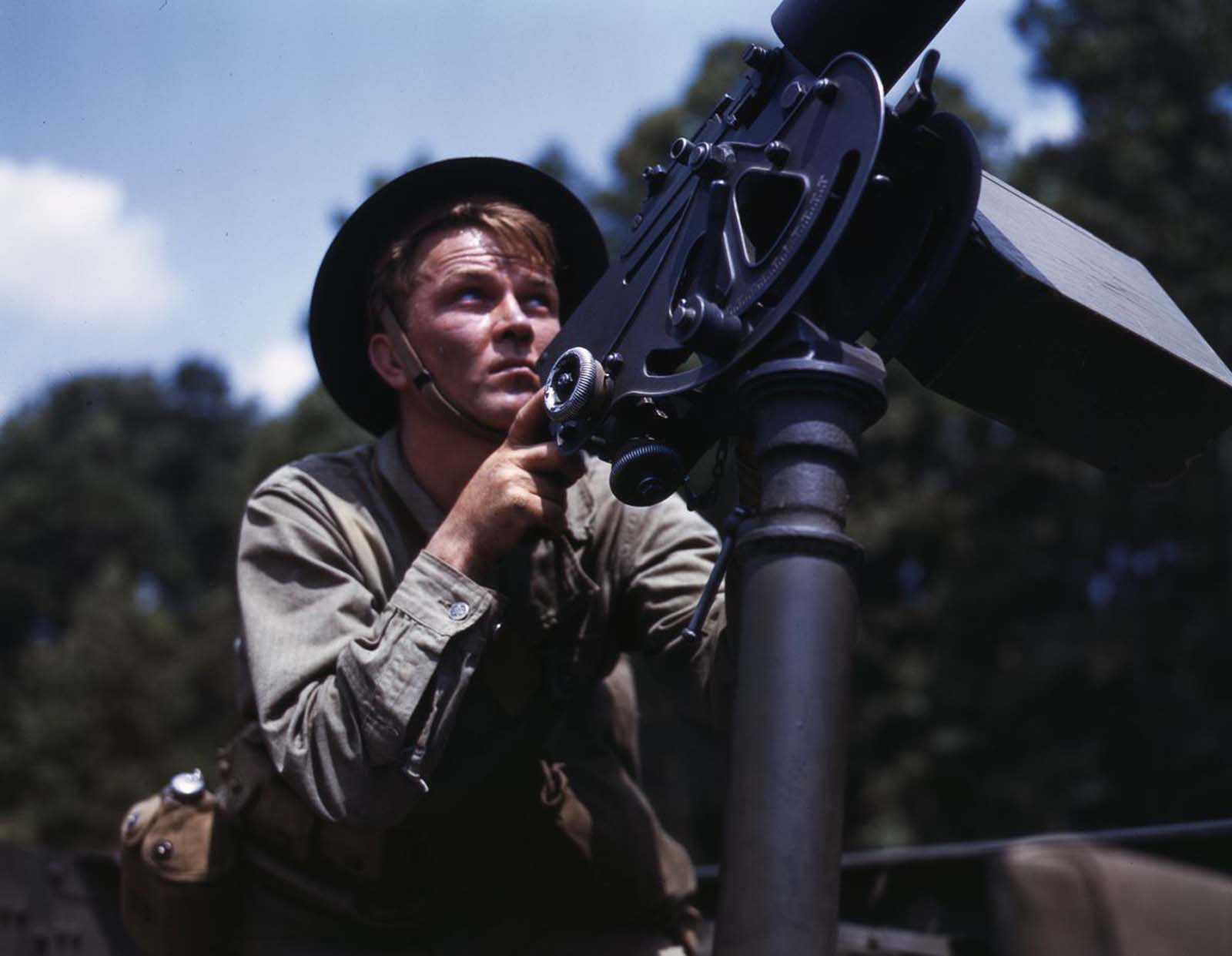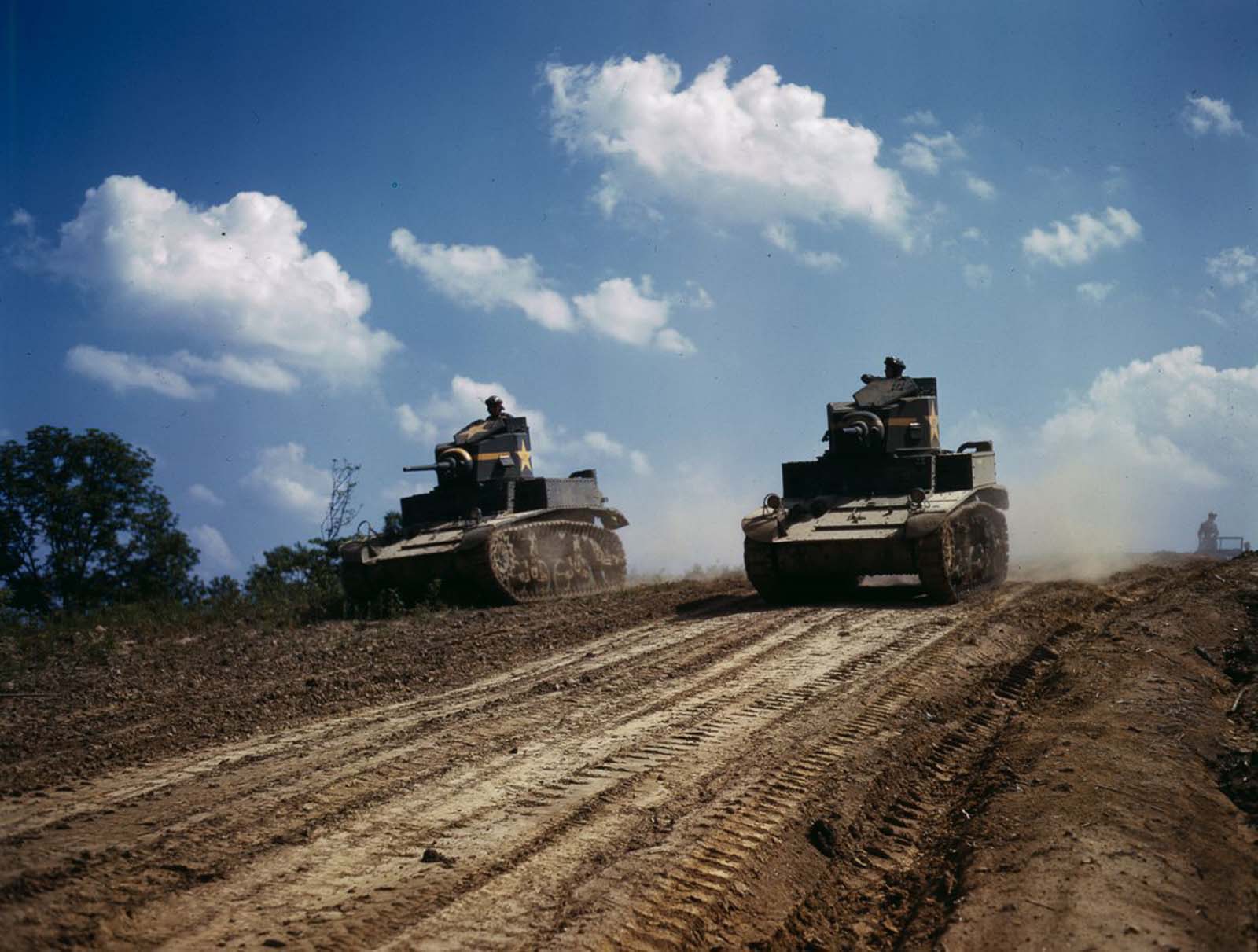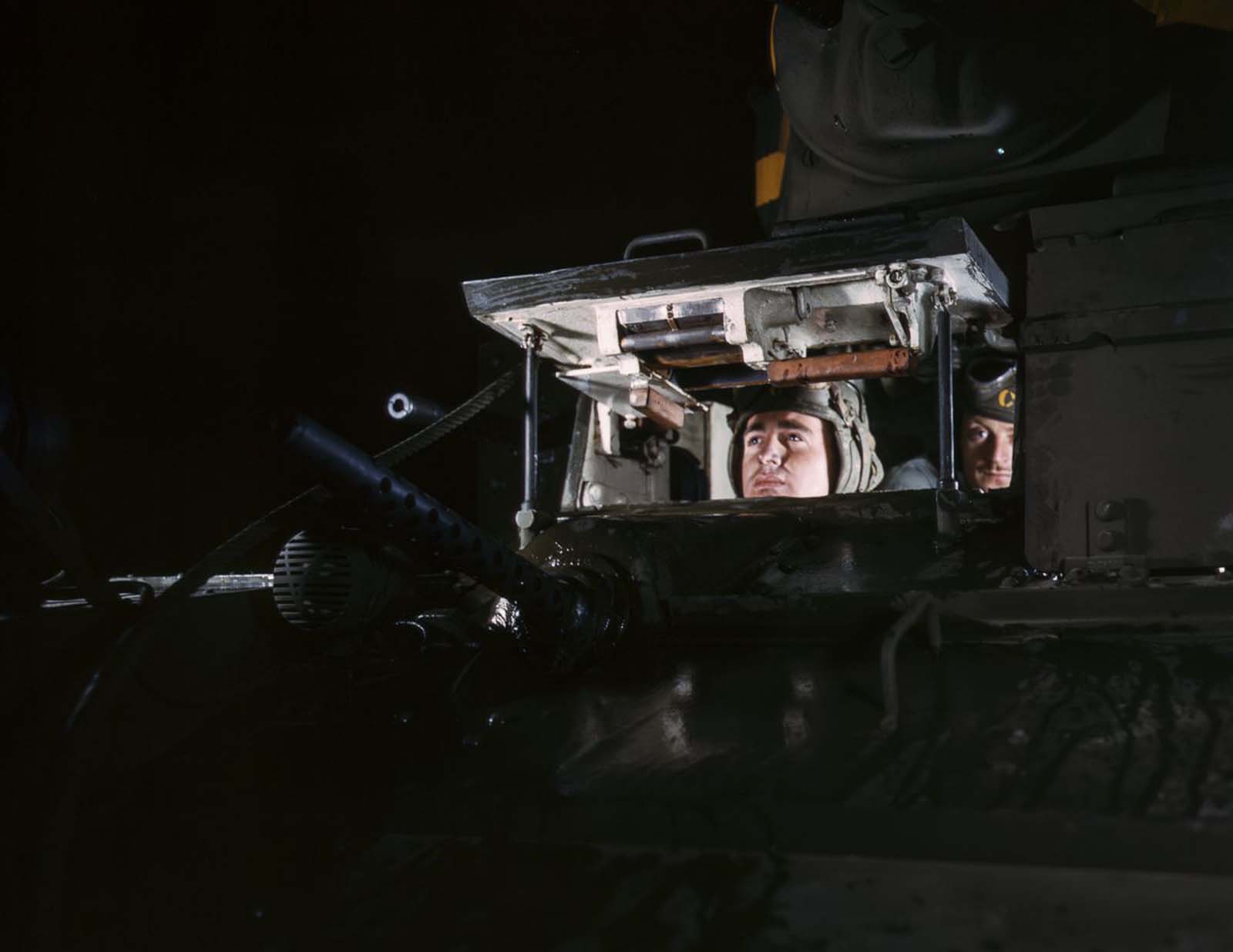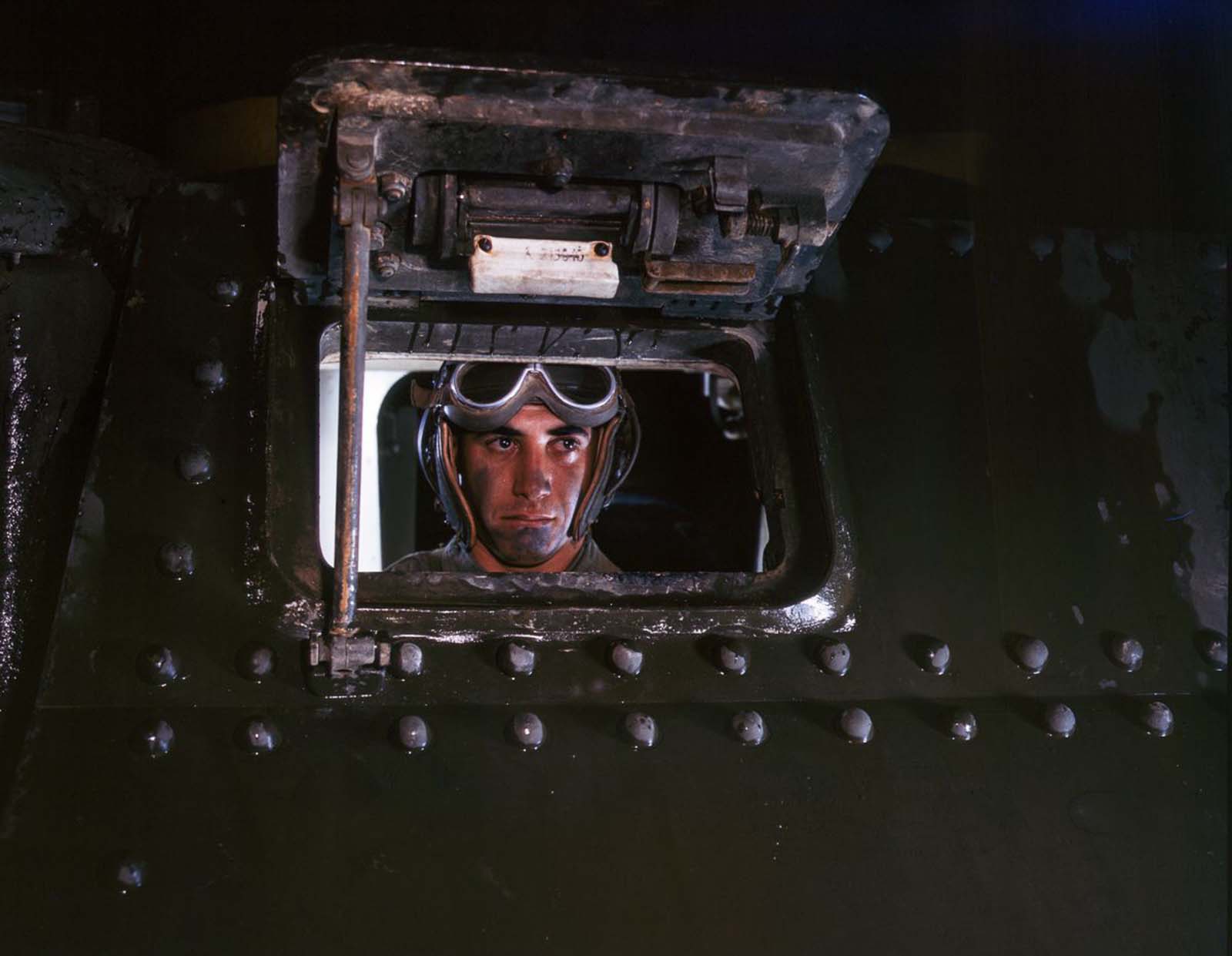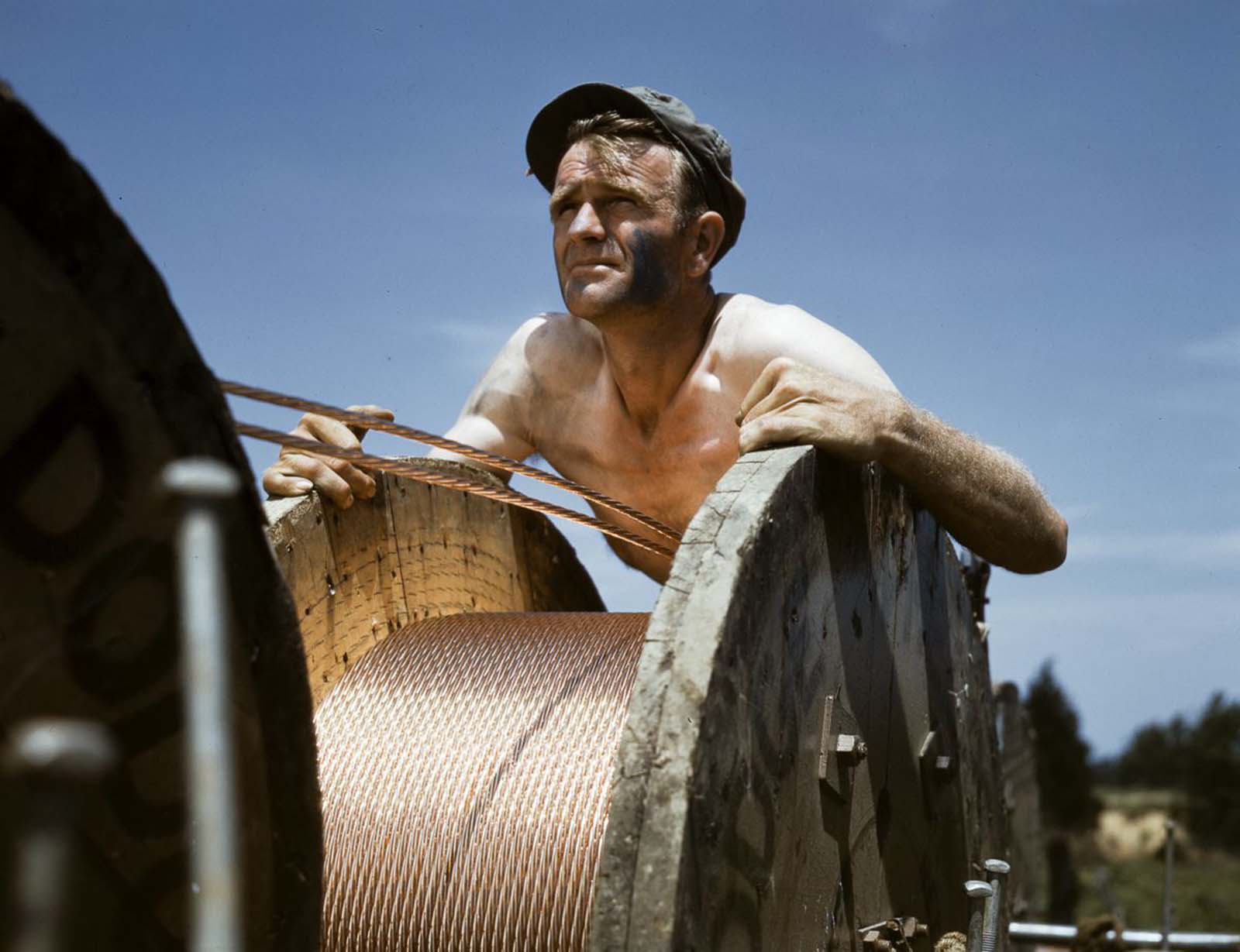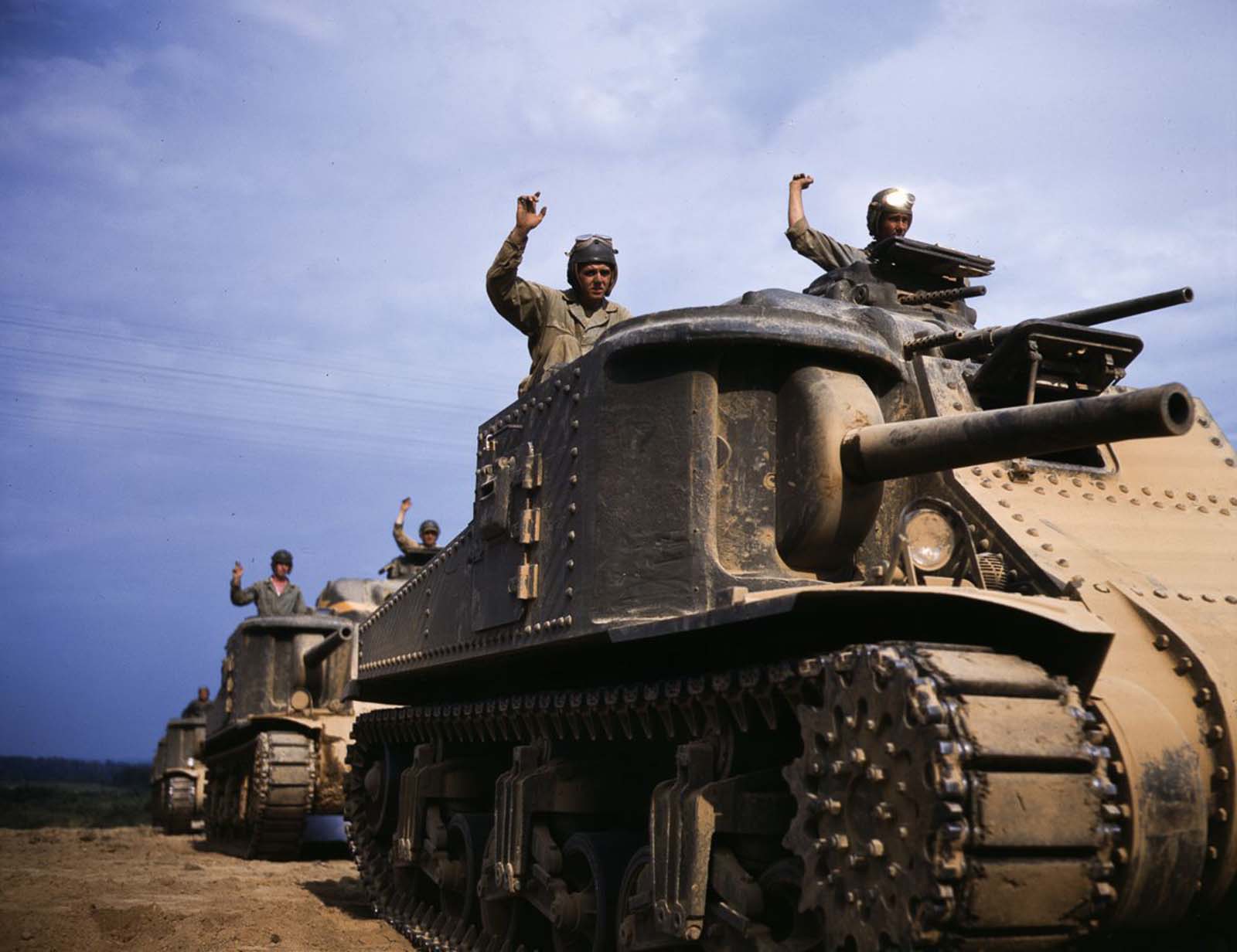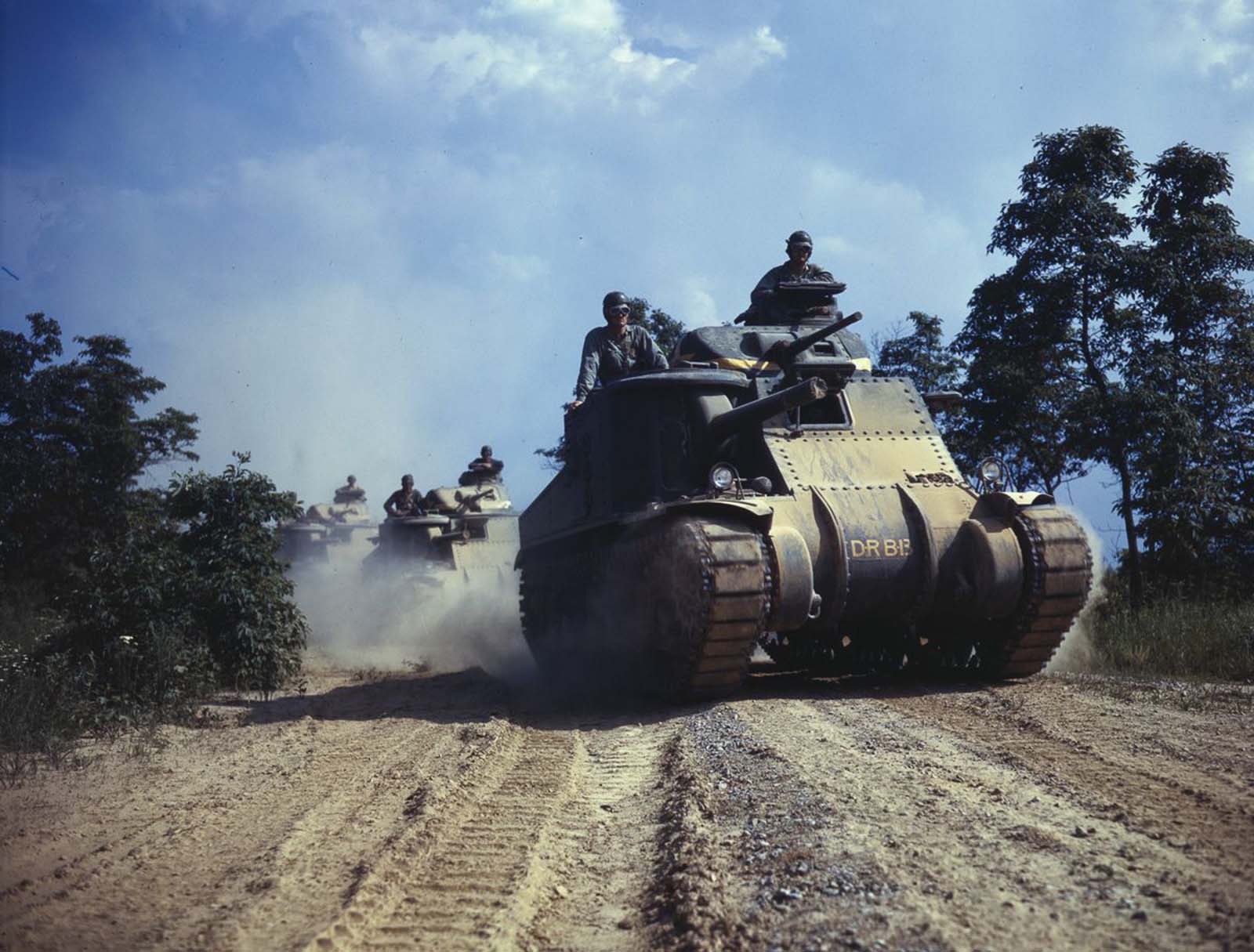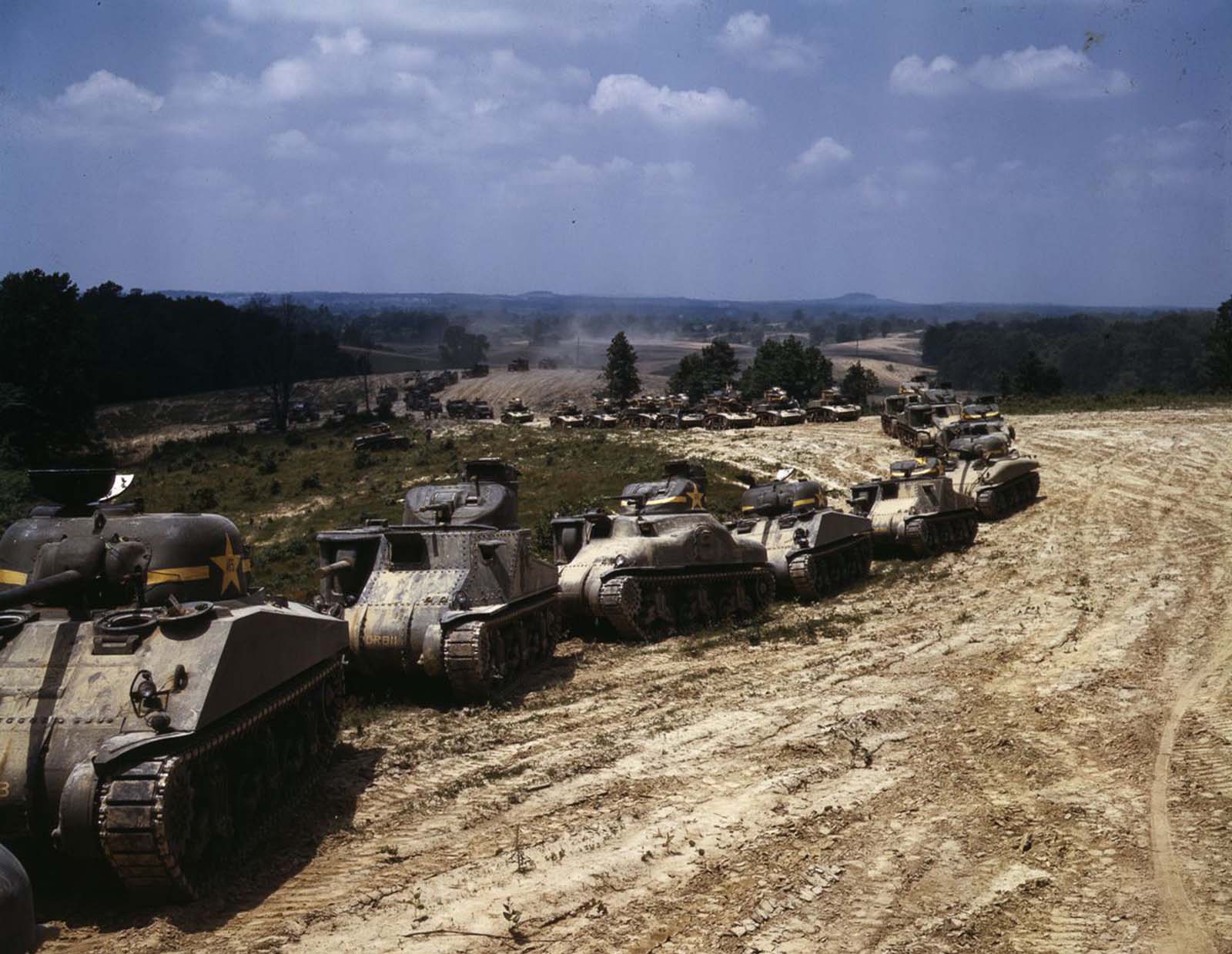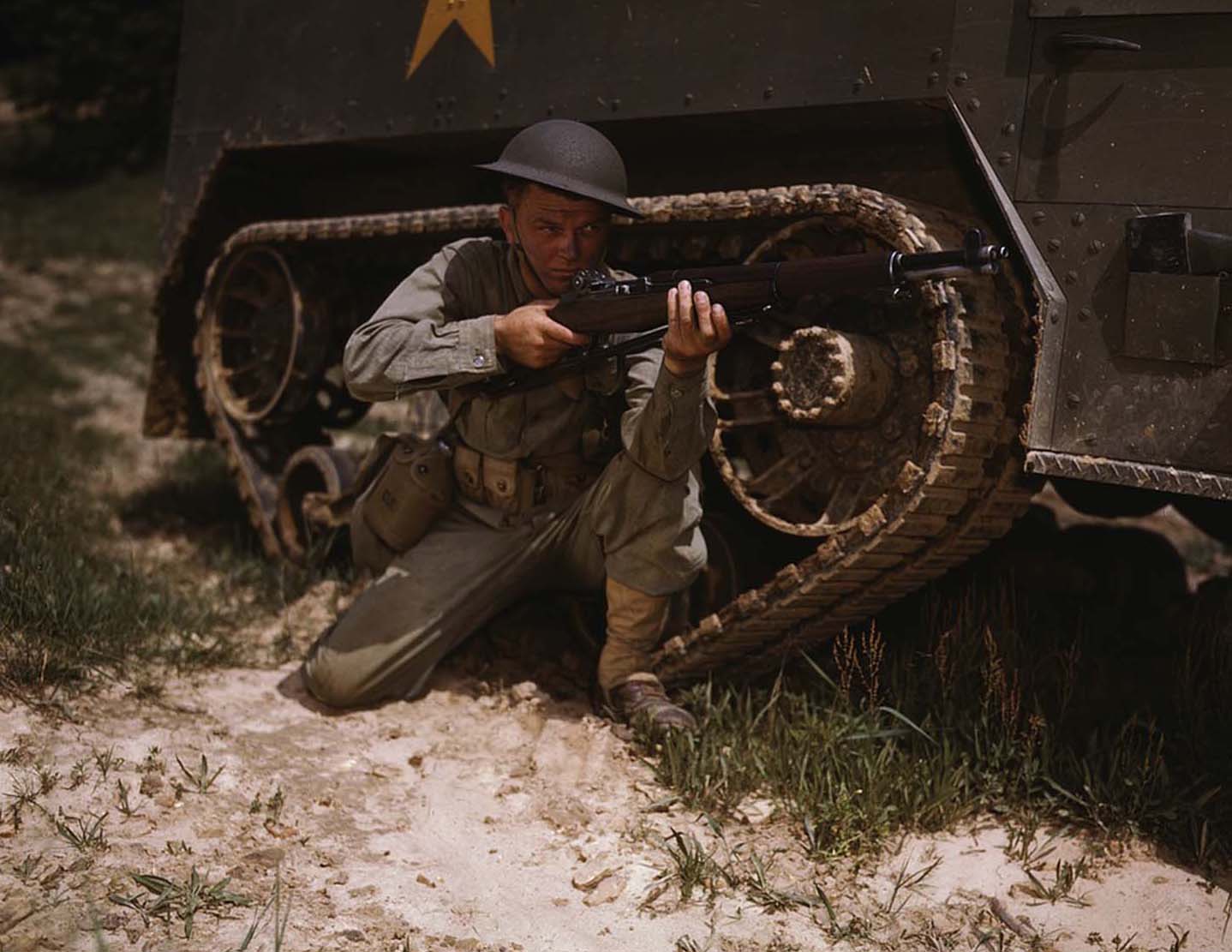With the outbreak of World War II in Europe, the American Army prepared with the creation of the Armored Force and headquartered it at Fort Knox in the summer of 1940. It was responsible for establishing armored formations, doctrine, and training in the use of armored vehicles. Selective Service was implemented and thousands of citizen soldiers were ordered to Fort Knox and introduced to the tank. The post was required to undergo a massive building boom and acquisition of land to support these troops. These photographs depict at least four different variants of two different tanks, some of them lacking armament, cobbled together for the photographer. M4 Sherman production had just begun in February 1942, and it was around the time these photos were taken that the U.S. 1st Armored Division had been stripped of its new M4A1 Shermans so that they could be urgently shipped to North Africa to cover British tank losses in the Western Desert. The M3 Lee tanks in the photo represented the largest number of medium tanks in the U.S. Army, at the time, but they were essentially 1939 technology, developed as a stopgap that could be manufactured in large numbers very quickly. The M4 and M4A1 Shermans shown here initially made a good showing in battle, but instead of continuing the development of ever more powerful guns and thicker armor, the Army concentrated on production, believing from the good reports from Sherman’s initial battles against German tanks in North Africa that development could wait. As it turned out, it couldn’t, and while the Sherman was not the “death trap” some called it, especially after modifications, the failure to continuously refine and improve the design ultimately cost Allied lives. The most common tank in the Army at the time remained the M3 Stuart, a good design but already behind the times. In 1931 a small force of the mechanized cavalry was assigned to Camp Knox to use it as a training site. The camp was turned into a permanent garrison in January 1932 and renamed Fort Knox. The 1st Cavalry Regiment arrived later in the month to become the 1st Cavalry Regiment (Mechanized). In 1936 the 1st was joined by the 13th to become the 7th Cavalry Brigade (Mechanized). The site quickly became the center for mechanization tactics and doctrine. The success of the German mechanized units at the start of World War II was a major impetus to operations at the fort. A new Armored Force was established in July 1940 with its headquarters at Fort Knox with the 7th Cavalry Brigade becoming the 1st Armored Division. By 1943, there were 3,820 buildings on 106,861 acres (43,245 ha).
(Photo credit: Alfred T. Palmer / Library of Congress / Tank descriptions from Defense Media Network / US Army Fort Knox / Wikimedia Commons). Notify me of new posts by email.
Δ Subscribe
